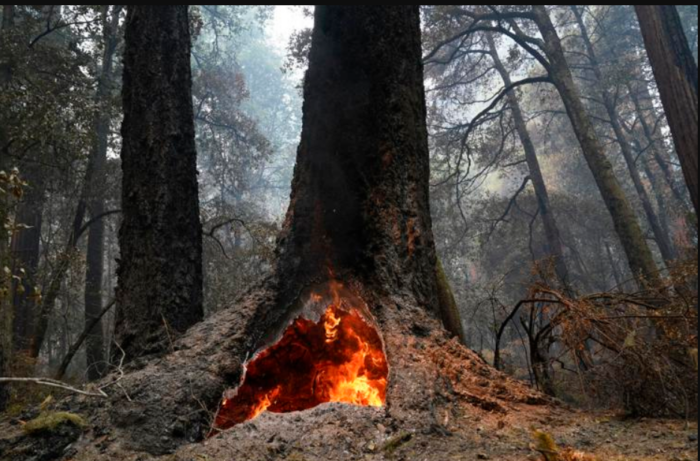Federal officials planned to announce Thursday that the Biden administration has identified more than 175,000 square miles (453,000 square kilometers) of old growth and mature forests on U.S. government land and will create a new rule to protect them from fires, insects, and other climate change effects.
The Associated Press previewed the government’s first nationwide inventory of mature and old-growth federal forests.
According to the inventory, U.S. Forest Service and Bureau of Land Management holdings have over 50,000 square miles (129,000 square kilometers) of old growth forests and 125,000 square miles (324,000 square kilometers) of mature woods.

The Biden administration has identified 175,000 square miles of old-growth and mature forests on federal lands.
More than half of the two agencies’ forested terrain is greater than California. Officials warn climate change intensifies wildfires, drought, disease, and insects, destroying some forests and putting older trees under pressure.
“Older forests are struggling to keep up with climate change,” said USDA Under Secretary for Natural Resources and the Environment Homer Wilkes. “Adapt quickly.”
Last year on Earth Day, President Joe Biden announced his plans to safeguard older forests, which the lumber sector and several lawmakers questioned.
They’ve urged the administration to focus on clearing stands of trees where decades of fire suppression have enabled undergrowth to bloom, which can make fires worse.
This week, Senate committee members from both parties pressed Forest Service Chief Randy Moore to speed up federal forest thinning.
Moore was grilled by Wyoming Republican Sen. John Barrasso, who warned that the administration’s conservation initiatives may “lock Americans out of the public lands” by banning timber harvests and other uses.

Most Lower 48 old growth woods were logged in the last two centuries. The 2001 “roadless rule” under previous President Bill Clinton prevented logging on 25% of federal forests, indirectly protecting elder trees.
“There’s a significant amount of mature and old growth trees that are already protected,” said Nick Smith of the American Forest Resource Council, a timber industry group. “We’re not calling for active management on environmentally sensitive landscapes, but at least where we can do thinning and wildfire mitigation fuels reduction. Federal land managers should already do that.”
Thursday, administration officials requested comments on a draft rule to “adapt current policies to protect, conserve and manage national forests and grasslands for climate resilience.”
The federal register would publish a formal rulemaking notice soon. Details were withheld.
Environmental groups pressed the administration to restrict forest logging of older trees.
Earthjustice’s Blaine Miller-McFeeley said a new rule would allow some logging but emphasize conservation and recreation.
“We are still logging old growth and mature forests here at home,” Miller-McFeeley remarked. The concentration has been on board feet harvested. It has not focused on which trees are most scientifically sensible to bring down for climate, community protection from wildfires.”
Gambel oaks were 80 years old, bristlecone pines 300 years.

Idaho, California, Montana, and Oregon have most old-growth woods. An online Forest Service map shows them throughout New England, the Great Lakes, and southern states including Arkansas, Kentucky, and West Virginia.
According to the inventory, pinyon and juniper trees dominate the largest old growth forests, covering 14,000 square miles (36,000 square kilometers).
Alaska federal areas under old growth analysis were excluded from the inventory.
Experts claim huge trees can store large amounts of carbon dioxide and prevent it from warming the globe.
Recent California wildfires that killed thousands of enormous sequoias underscore the issue’s severity. In 2021, lightning-sparked wildfires killed thousands more of Earth’s biggest trees. They live in 70 Sierra Nevada groves on the west side.
According to the Copernicus Atmosphere Monitoring Service, 2021 wildfires released 7.1 billion tons (6.4 billion metric tons) of carbon dioxide. The International Energy Agency reported 18% of world coal, oil, and other energy source CO2 emissions in 2021.




